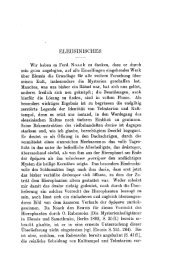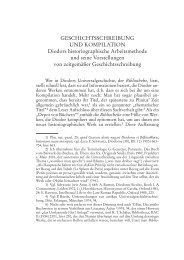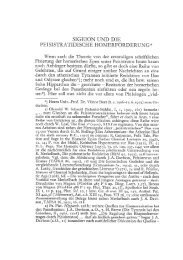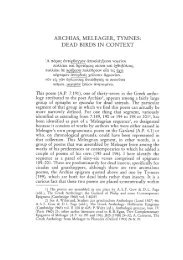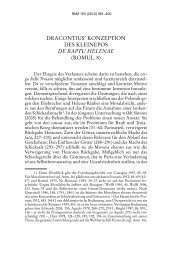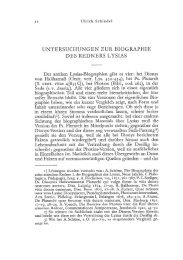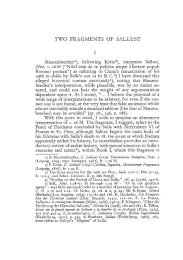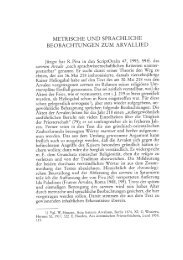THE GEOGRAPHY OF THE PROMETHEUS VINCTUSI
THE GEOGRAPHY OF THE PROMETHEUS VINCTUSI
THE GEOGRAPHY OF THE PROMETHEUS VINCTUSI
Create successful ePaper yourself
Turn your PDF publications into a flip-book with our unique Google optimized e-Paper software.
126 Margalit Finkelberg<br />
from this account that the route of the Argonauts as represented in<br />
this version is essentially that proposed to 10 in the P.V. The only<br />
difference is that of direction: 10 starts from the ocean at the<br />
extreme north-west of Europe, proceeds east along the coast until<br />
she reaches a great river, goes up this river southwards as far as its<br />
sources, and eventually arrives at Lake Maeotis, whereas the Argonauts<br />
start from Lake Maeotis, sail up the Tanais as far as its<br />
sources, pass overland to a river which flows into the ocean and<br />
eventually find themselves in the ocean at the extreme north-west<br />
of Europe 19 .<br />
At the same time, it is actually out of the question that<br />
Timaeus' picture of West Europe can be an independent one, and<br />
not only because Diodorus explicitly remarks that Timaeus was<br />
not the first to introduce it. As is weIl known, this historian was<br />
notorious for not being in the habit of basing his geographical<br />
accounts on the firsthand knowledge of his own 20 , and it goes<br />
without saying that his geography of Europe, not founded as it is<br />
on any established literary tradition, must have included a considerable<br />
element of firsthand knowledge of the continent. It is indeed<br />
reasonable to suppose that updating of the map of Europe<br />
went hand-in-hand with the expansion of practical knowledge of<br />
the continent's geography. Note that Timaeus introduced his version<br />
of the return of the Argonauts through Central and Northern<br />
Europe only to disqualify the alternative one, according to which<br />
they returned to the Mediterranean through an additional, nonexistent,<br />
branch of the Ister, which was supposed to empty into<br />
the Adriatic. Diodorus comments on this view: "For time has<br />
refuted those who assumed that the Ister which empties by several<br />
mouths into the Pontus and the Ister which issues into the Adriatic<br />
flow from the same regions. As a matter of fact, when the Romans<br />
subdued the nations of the Istrians it was discovered that the latter<br />
river has its sources only forty stades from the sea."21 In view of<br />
this, it is reasonable to suggest that Timaeus' alternative solution to<br />
the problem of the Argonauts' return was also based on some new<br />
information deriving from firsthand knowledge of the geography<br />
19) If we take into aeeount the tradition plaeing the sourees of the Tanais in<br />
the Rhipaean mountains (Mela 1.115; Pliny, N.H. 4.78; Luean 3.272f.; Orosius<br />
1.2.4; Dion. Periegetes 663 H.; cf. Bolton 52-53), it would be plausible to suggest<br />
that this was the plaee where the Argonauts were supposed to have hauled their<br />
ship overland.<br />
20) See Polyb. Book 12 passim, esp. frr. 25e.7, 25h.1, 27.1-3, 28.6, 28a.7.<br />
21) Diod. Sie. 4.56.8; cf. Strabo 1.3.15 p.57C.



